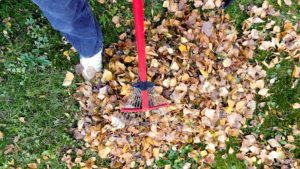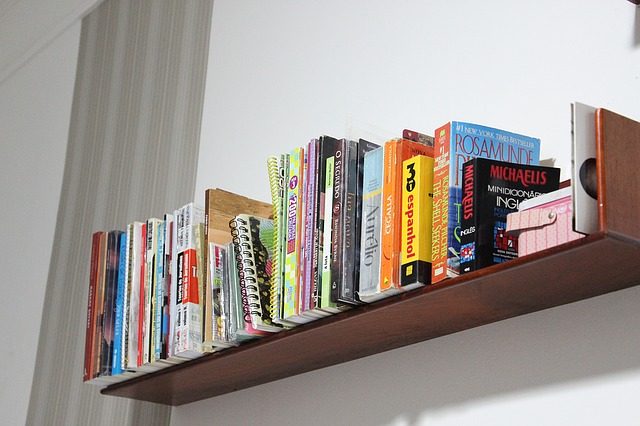by Jayme Radomski | Apr 3, 2019 | Clutter, Money & Paper Management
 Whether you own a business, run an office, are an entrepreneur or manage a household, going paperless can reduce clutter and improve efficiency. Although it is nearly impossible to go completely ‘paperless’, you can benefit greatly by digitizing much of your paperwork. This will reduce the amount of physical paper you keep.
Whether you own a business, run an office, are an entrepreneur or manage a household, going paperless can reduce clutter and improve efficiency. Although it is nearly impossible to go completely ‘paperless’, you can benefit greatly by digitizing much of your paperwork. This will reduce the amount of physical paper you keep.
Benefits to reducing physical papers include increasing productivity, reducing time spent on paper management, and having a system that is easily accessible to you and your team. This article focuses on creating a system of digital document workflow.
Document Workflow
Having a basic document workflow is the first step in properly establishing a reduction in papers. This simple workflow is described below.
Reception-Inbox-Capture-File
Reception
Reception includes receiving of both physical and electronic documents. Reduce the number of documents that enter your office by unsubscribing to emails and physical subscriptions. Eliminating the unnecessary saves time from having to manage useless papers. Recycle unnecessary physical documents and unneeded emails immediately. The remaining documents move to or stay in the Inbox.
Inbox
Have an inbox where documents are placed when they come in. This is where the documents reside until they are addressed. You should have a physical inbox and an email inbox for each person involved.
Once the document is addressed (read, paid, acted on, forwarded), it will be captured and moved the place it will be stored. How and when you move documents to file is up to you. You can save them for a limited period of time (day, week, month) and then have the documents filed.
Capture
Capture the information from the documents. Physical papers are scanned to electronic files, typically to a PDF (portable document file). Emails and electronic documents are also converted to PDFs. I find it helpful to go through and scan/create PDFs in small batches before filing. Letting the pile get too large can get overwhelming. This can also cause confusion if there are documents that need to be retrieved, but have not yet been filed properly.
How to Capture Documents
You can capture documents in many different ways. A mobile device or a document scanner work well for this.
Document scanners work great for processing larger quantities of documents, and converting them to PDF files and searchable PDF files. Consider a scanner that can handle many documents at one time, and has the capability to capture both sides of a two-sided document. Neat and ScanSnap are couple tools that work great for this. You can also outsource your scanning if you have a large number of documents and are short on time. Using a multi-function printer-copier-scanner can prove to be frustratingly slow, as it may allow only one side of a document to be scanned at a time.
From your phone or tablet, you can capture business cards, receipts, track mileage, and have documents signed on-site. There are also apps that can scan a business card and add the information right to your contacts and connect you on LinkedIn. I discuss a few of these resources below.
CamCard is great for capturing, saving and exchanging business cards
Evernote is great for managing all types of digital papers
MileBug mileage tracker app uses phone GPS and can export mileage to Excel
Expensify captures receipts and forms expense reports
Shoeboxed captures and manages receipts and mileage
Quickbooks is a full service accounting software that can invoice, track receipts, manage payroll and prepare financial reports
DocuSign and HelloSign allow you to receive full legal signatures from your mobile device and send them to email or your cloud-based storage
File
To effectively create useable file system, the file structure and naming convention of each file needs to be consistent and easy to follow. Create a file structure and naming convention that makes sense to you.
File Structure
You will create an electronic file folder structure similar to a physical file cabinet. Think about how you will search for the file when you need to reference the document. Keep the file structure simple. Don’t have too many layers of folders that could over complicate things, or be too challenging to use. You will want to keep the file folders simple and shallow. For example, Insurance folder can store home owner’s insurance and automobile insurance. The way you name the file will expose more details to the content of the documents.
File Naming Convention
Create a consistent file naming convention (how you label your files) that is easy to follow, and coordinates with how you would look for the file. If you work with a team, have the team decide together on the best naming convention. That way it makes sense to everyone and everyone is willing to use the consistent naming convention.
It is good to include the date, subject or file folder title, client name, client code or number, and other words to help you recognize the contents of the document. I like to start with the date so the files are nicely organized by date first. The subject or file folder name would come second. Remember, they will be placed in a folder that contains the main subject.
For example, in a “Contractor” folder you might have a file titled like:
“04012019 Contractor Top Shelf Invoice.pdf “. This could be your April invoice from Top Shelf Home organizing that you received on April 12, 2019.
In your “Insurance” folder you might have a file titled similarly to:
“01012019 Insurance Automobile Jan thru April.pdf” This could be your automobile insurance for the first half of 2019 that was effective January 1, 2019.
Where to Store Files
There are a few places you can store your documents; the cloud, your computer, external hard drive and automatic backup service. Select at least two locations such as your computer and the cloud, so when the inevitable happens your files are backed up. Remember fires, floods and theft, and consider an off-site back up method.
Cloud storage examples include Dropbox, Evernote, and Google Drive.
Computer storage includes Windows folders, Finder on Mac OS. There are also additional software products available for purchase that can streamline your files.
External hard drives are available for backing up your files. These drives are capable of storing very large files and lots of them for a reasonable price. You can also back your files up on simpler external ‘jump’ drives, which are more portable for storing backed up data offsite.
When implementing your file system, start with current documents. Get your system in place and bugs worked out. Once your system is up and running, begin to work through our backlog. It will go much quicker than you think.
Start your paperless journey with a plan. Jumping in without a good structure in place will lead to frustration and likely failure. The team at Top Shelf is happy to help you create your plan and guide you through the process. Get in touch with Jayme when you are ready to take the next step.
by Jayme Radomski | Dec 4, 2018 | Clutter, Money & Paper Management, Relationships, Holidays
 1. Save Money
1. Save Money
Giving experiences does not have to cost a lot of money or put you into debt. An experience can be as simple as an afternoon in the park, inviting someone into your house for a homemade dinner or going for a hike together. No one wants you to go broke purchasing material gifts for them.
2. Make Memories
The memories created when you spend time one-on-one with friends or family are kept forever. The anticipation alone of an experience can bring much more joy than a material gift. They are not tangible like a bottle of wine or a set of decorative towels that will soon be used up or packed away into storage.
3. Quality Time
Time with a loved one brings you closer and allows you to focus on the relationship you hold dear. Friendship is spending time together listening, learning and helping. Memberships, lessons and outings together are great quality time.
4. Less Stuff
Material gifts soon find their way into storage or are left to feel more like clutter. Toys are left on the floor to be tripped over and pieces lost. Eventually, a material gift can add stress and burden to the recipient.
Still not sold on the idea of giving an experience instead of a material gift?
Start slow. Consider a fun photo frame to give with the experience so a photo of them enjoying the experience can be placed in the frame. Create a memory book of the past year’s activities, outings and experiences. Give a puzzle or game that you can play with your friends and family. These options still give you the opportunity to spend time and create memories together.
Have fun and enjoy making memories. If organizing and planning are overwhelming, a professional organizer can help. See if Top Shelf Home Organizing can help you on your journey. Contact Jayme to schedule a consult or chat about organizing.
by Jayme Radomski | Oct 9, 2018 | Clutter, Wardrobe
The cool weather is here and it is time to organize your fall and winter wardrobe. Here are some basic steps for refreshing your wardrobe for the cool seasons ahead.
1. Pack Away Summer Items
 Take all spring and summer items out of your closet and dresser. Have all your items cleaned before placing them in storage. Moths love food remains and sweet smelling scents. Use storage containers that will allow air to flow. You don’t want to trap any moisture into the fabrics by sealing up your clothing in plastic bags and containers. Store the clothing and shoes away from your fall and winter shoes and clothing. Storage areas could be an extra closet, basement, attic, or simply in the back of your closet.
Take all spring and summer items out of your closet and dresser. Have all your items cleaned before placing them in storage. Moths love food remains and sweet smelling scents. Use storage containers that will allow air to flow. You don’t want to trap any moisture into the fabrics by sealing up your clothing in plastic bags and containers. Store the clothing and shoes away from your fall and winter shoes and clothing. Storage areas could be an extra closet, basement, attic, or simply in the back of your closet.
2. Organize Fall and Winter Items
All fall, winter and year-round items should be pulled out of your dressers and closets. You will want to sort items into categories; piles of pants, tops, sweaters, shoes, scarves, etc. Take some time to assess what pieces serve you well, what pieces can be removed and what pieces should be replaced. Before returning the items to your closet and dresser, neatly fold and hang them. If any items need cleaning, take care of this so your wardrobe is clean and ready for the season.
3. Remove Items
This is a great time to assess your wardrobe. Donate and consign items that no longer serve you. Women’s centers are always delighted to take in clothing. Consignment sales, such as Divine Consign, are a great way to recoup some of your investment, and purchase items to complete your current wardrobe.
4. Replace Basics
Replace items that are stained, stretched, faded or no longer fit. Adding some fresh new basics to your wardrobe can make seasonal favorites feel fresh and new. This is also a great time to update undergarments and socks.
If wardrobe changeover and organizing is overwhelming, a professional organizer can help. See if Top Shelf Home Organizing can help you on your journey. Contact Jayme to schedule a consult or chat about organizing.
by Jayme Radomski | Aug 21, 2018 | Cleaning, Clutter
 Fall brings the feeling of nesting for us all. The season change and a cold winter ahead has us planning and preparing. Getting a start on fall organizing will make your fall more relaxed. Here are some things you can do right now to prepare.
Fall brings the feeling of nesting for us all. The season change and a cold winter ahead has us planning and preparing. Getting a start on fall organizing will make your fall more relaxed. Here are some things you can do right now to prepare.
Garage Organizing
With any organization process, the key to cleaning is clearing away the clutter.
- Spread everything into your driveway, to go through everything you’ve piled into the garage.
- Group by use such as toys, tools, garbage and equipment.
- Get rid of anything you haven’t used in two years.
- Get rid of anything broken, or otherwise considered junk.
- Buy hooks and shelves to get as much as you can off the floor. Storage is important. Peg boards, wall shelves, rolling carts and wall hooks should be used whenever possible.
- Buy clear bins with labels to help keep smaller items organized and easy to find when needed. Consider open bins for toys and equipment that are frequently accessed.
- Mark areas where items get stored such as labels on the walls and shelves, and painter’s tape on the floor.
Outside Organizing
With your outdoor areas packed up, you can enjoy the cooler month’s guilt-free and tucked indoors.
- Take care of and pack up your outdoor living items.
- Clean any pieces you plan to store: cushions, hammocks, umbrellas.
- Stack patio furniture and cushions, and store in your garage or on a covered porch. If you don’t have the room, you can leave furniture outside with heavy-duty waterproof furniture covers. These will stand up to winter weather and keep everything protected. Most granite pieces can withstand the elements so you can leave those alone, but softer stones like cast stone, marble or manufactured stone should be either covered or moved.
- Clean and cover your grill, but you don’t need to pack it away. Keep your grill available for grilling all winter.
Yard Organizing
The beginning of fall is the perfect time to prep your lawn for a lush spring. You won’t be planting any new plants, but you’ll want to prep your green areas for the impending cold. And cooler temperatures mean you won’t be boiling in the summer sun while you work outdoors in the yard.
- Reseed any bare spots in your lawn and use a winter fertilizer that builds resistance to the cold.
- Prepare for the fall and winter by fertilizing, mulching and pruning shrubs and trees.
- Always rake fallen leaves.
- Plant bulbs for spring flowers.
Kitchen Organizing
- Pull out summer entertaining items and outdoor dishes to free up space in your cabinets and countertops.
- Clear the pantry of summer convenience foods.
- Before your next trip to the grocery store (or delivery), empty the refrigerator. Toss items that are expired.
- Wipe down all shelves and walls of the refrigerator.
- Inventory what food items you have and plan some meals around those items.
- Jot down some favorite fall meals to make your meal planning a bit easier.
Enjoy the cooler weather. Remember to take your organizing journey one step at a time. Focus on what matters and what will have the biggest impact for you.
If finding the time and creating a strategy to organize is overwhelming, a professional organizer can help. See if Top Shelf Home Organizing can help you on your journey. Contact Jayme to schedule a consult or chat about organizing.
by Jayme Radomski | Jul 3, 2018 | Busyness, Clutter
 Getting organized will save you time and money. Here are six ideas on how this can really happen.
Getting organized will save you time and money. Here are six ideas on how this can really happen.
- Meal Planning
When you plan meals, you spend less money at the store (or eliminate a trip to the grocery store altogether), eat healthier and waste less food. Having a plan prevents impulse purchases of overpriced convenience food and last minute carryout meals. When you know what food you have in your pantry, you can build meal plans around the ingredients you already have.
- Sell your clutter
Sell the items you no longer use or love, and the items you have multiples of. In addition to making a little cash, you will love the extra space to breathe.
- Limit repeat purchases
Getting organized helps you keep track of what you own so you don’t run out to purchase something that you can’t find. Like items get placed with like items… you’ll soon discover how many bottles of sunscreen and kitchen spatulas you actually own.
- Late fees vs. discounts
You’ll avoid late fees, and you’ll be able to see new ways you could save on your expenses. Instead of spending time trying to settle delinquent bills, you can ask your providers for discounts for being a good customer. Being on top of bills and due dates will keep your budget on track.
- Save time
Once you’re more organized, you will spend less time trying to find things and making multiple runs to the store. You can use that extra time for to be more productive, make more money to pay off your debts or add to your savings. Also, once you realize what you own, you will less likely go out shopping. This will save time, money and gas… double bonus!
- You’ll discover more ways to save
Once you get rid of the clutter in your house, you’ll free your mind up to figure out more ways to cut back or earn more. You will also see how little you really need, realizing you do not need to shop.
If planning and orgainzing are overwhelming, a professional organizer can help. See if Top Shelf Home Organizing can help you on your journey. Contact Jayme to schedule a consult or chat about organizing.
 Whether you own a business, run an office, are an entrepreneur or manage a household, going paperless can reduce clutter and improve efficiency. Although it is nearly impossible to go completely ‘paperless’, you can benefit greatly by digitizing much of your paperwork. This will reduce the amount of physical paper you keep.
Whether you own a business, run an office, are an entrepreneur or manage a household, going paperless can reduce clutter and improve efficiency. Although it is nearly impossible to go completely ‘paperless’, you can benefit greatly by digitizing much of your paperwork. This will reduce the amount of physical paper you keep.




